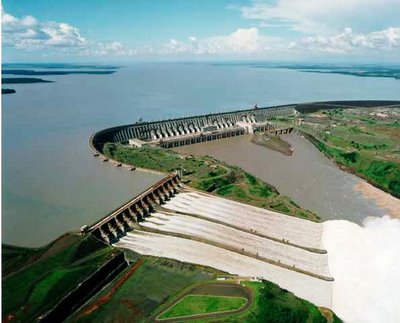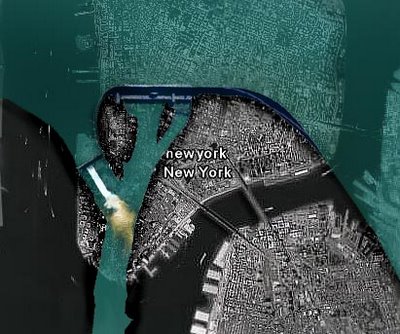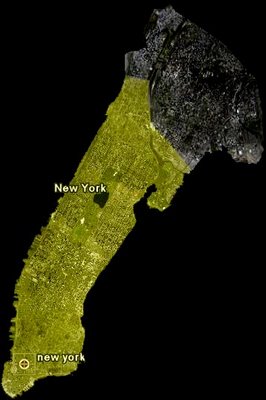 image courtesy www.wikipedia.org
image courtesy www.wikipedia.org What are the basic points of importance in a dam? There is the creation of a floodplain, a new basin of land fit for inhabitance and farming - a new source of resources. There is the creation of a reservoir, in this case, the re-routing of the Paranà River between Brazil and Paraguay. There is the creation (generation) of power, the basic entity which allows modern society to function and develop.
 Dimensionally, the dam is the largest in the world, spanning the same distance as the width of Manhattan Island. It generates the most power of any dam in the entire world, 90 billion kWh (kilowatt hours) per year. As shown in the following images, that is about 98 percent of the power that Manhattan Island consumes per year. The most powerful hydroelectric plant in the United States (Grand Coulee Dam) has the capacity to power only about three quarters of Manhattan Island.
Dimensionally, the dam is the largest in the world, spanning the same distance as the width of Manhattan Island. It generates the most power of any dam in the entire world, 90 billion kWh (kilowatt hours) per year. As shown in the following images, that is about 98 percent of the power that Manhattan Island consumes per year. The most powerful hydroelectric plant in the United States (Grand Coulee Dam) has the capacity to power only about three quarters of Manhattan Island.This amazing amount of power is produced with very minimal carbon dioxide emissions - it gives modern society its fuel and causes very little damage to the environment. Hydroelectric power is still a relatively underdeveloped technology.

 (above) Grand Coulee's capacity in relation to Manhattan Island
(above) Grand Coulee's capacity in relation to Manhattan Island(below) Itaipu's capacity in relation to Manhattan Island
In the business of re-routing rivers, the Itaipu dam has created the seventh-largest man-made body of water in the world. The re-routing of the river is a mega-adjustment, a reconstruction of what Mother Nature had built on her own. I feel that this is the most interesting aspect of the concept of the dam - the re-routing of the course of nature. For the sake of power production and population growth, some of the world's major rivers may be re-routed. Perhaps entire cities will be built, displaced from where nature intended they be. The dam is a symbol of mankind's increasing power over its world but is a refreshingly safe way to control it.
unattributed images are original illustrations, photos courtesy Google Earth
SOURCES:
www.wikipedia.org
http://www.pbs.org/wgbh/buildingbig/wonder/structure/itaipu.html
http://www.itaipu.gov.br/
unattributed images are original illustrations, photos courtesy Google Earth
SOURCES:
www.wikipedia.org
http://www.pbs.org/wgbh/buildingbig/wonder/structure/itaipu.html
http://www.itaipu.gov.br/




